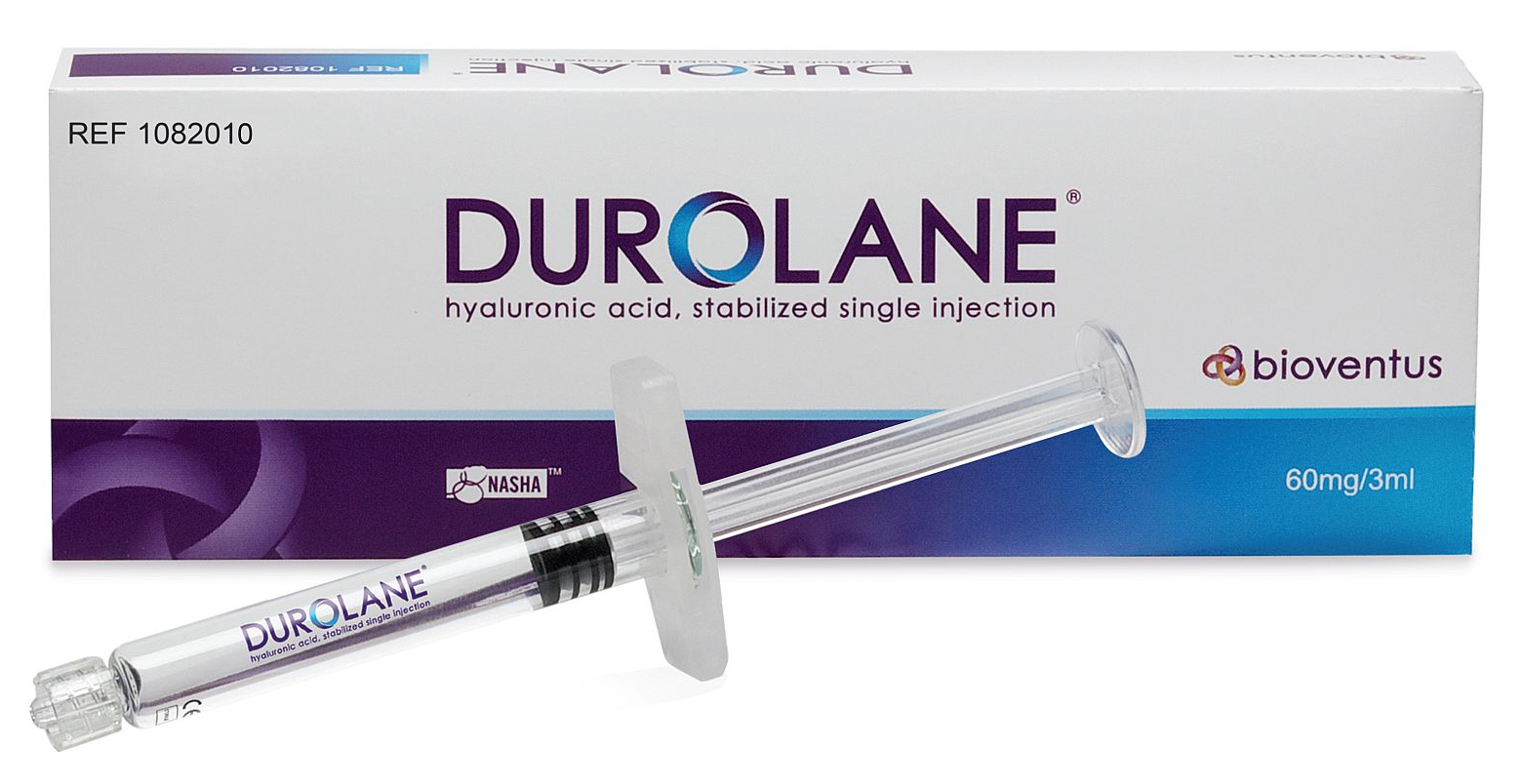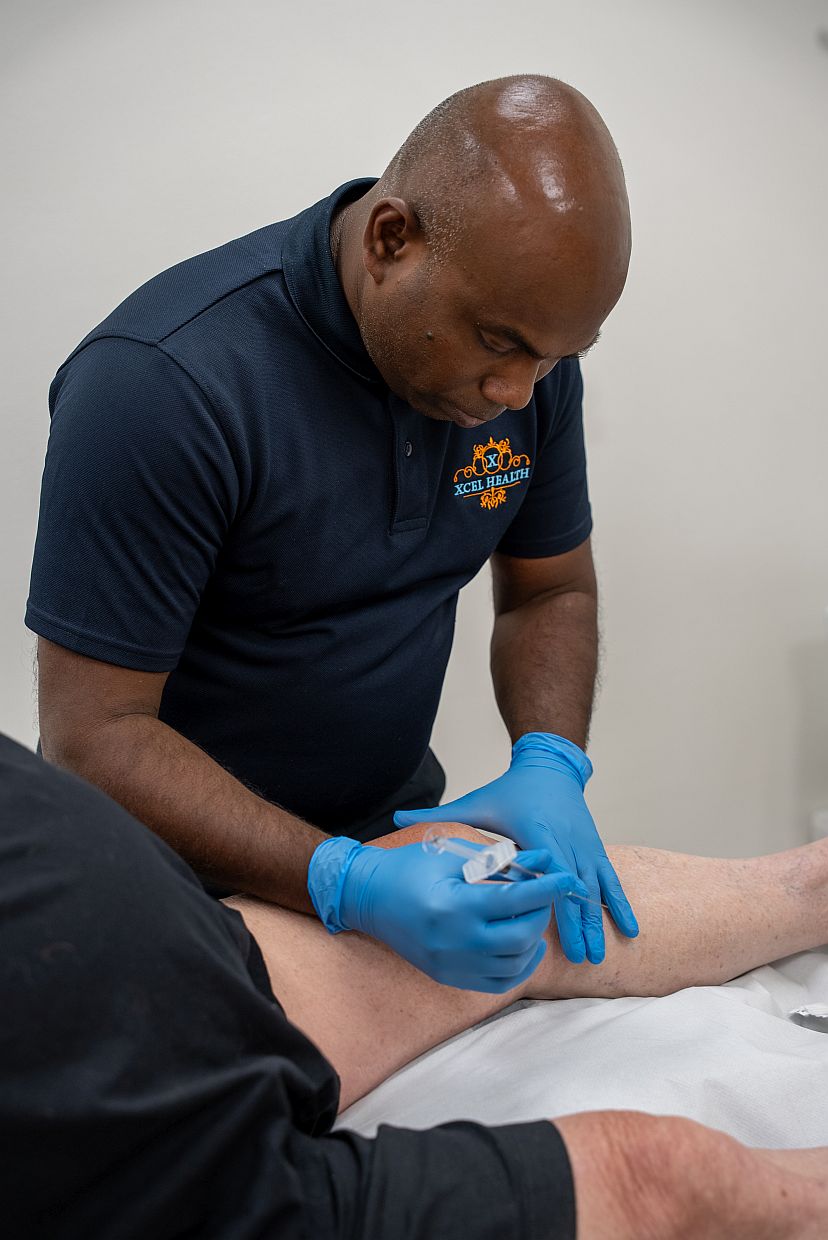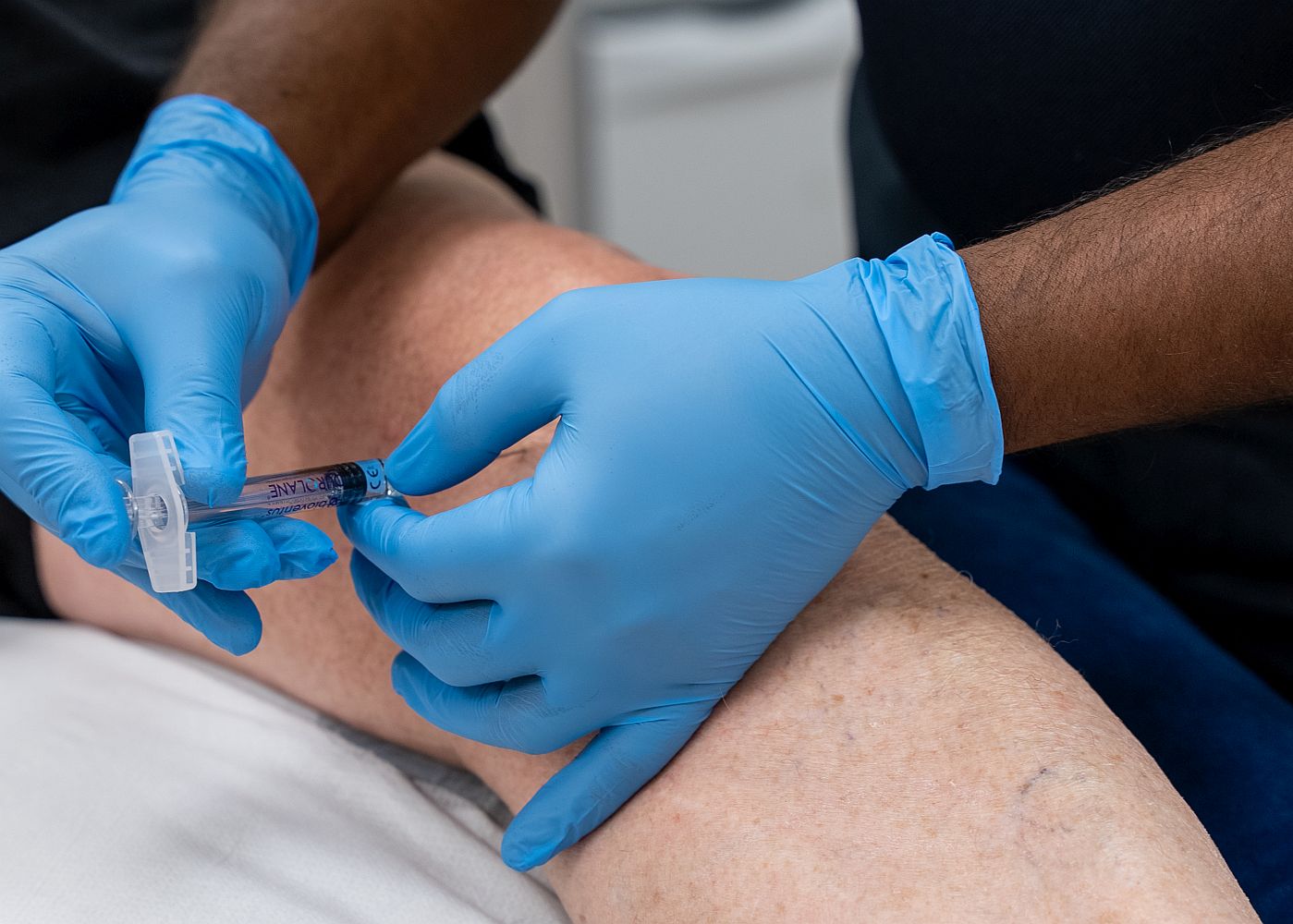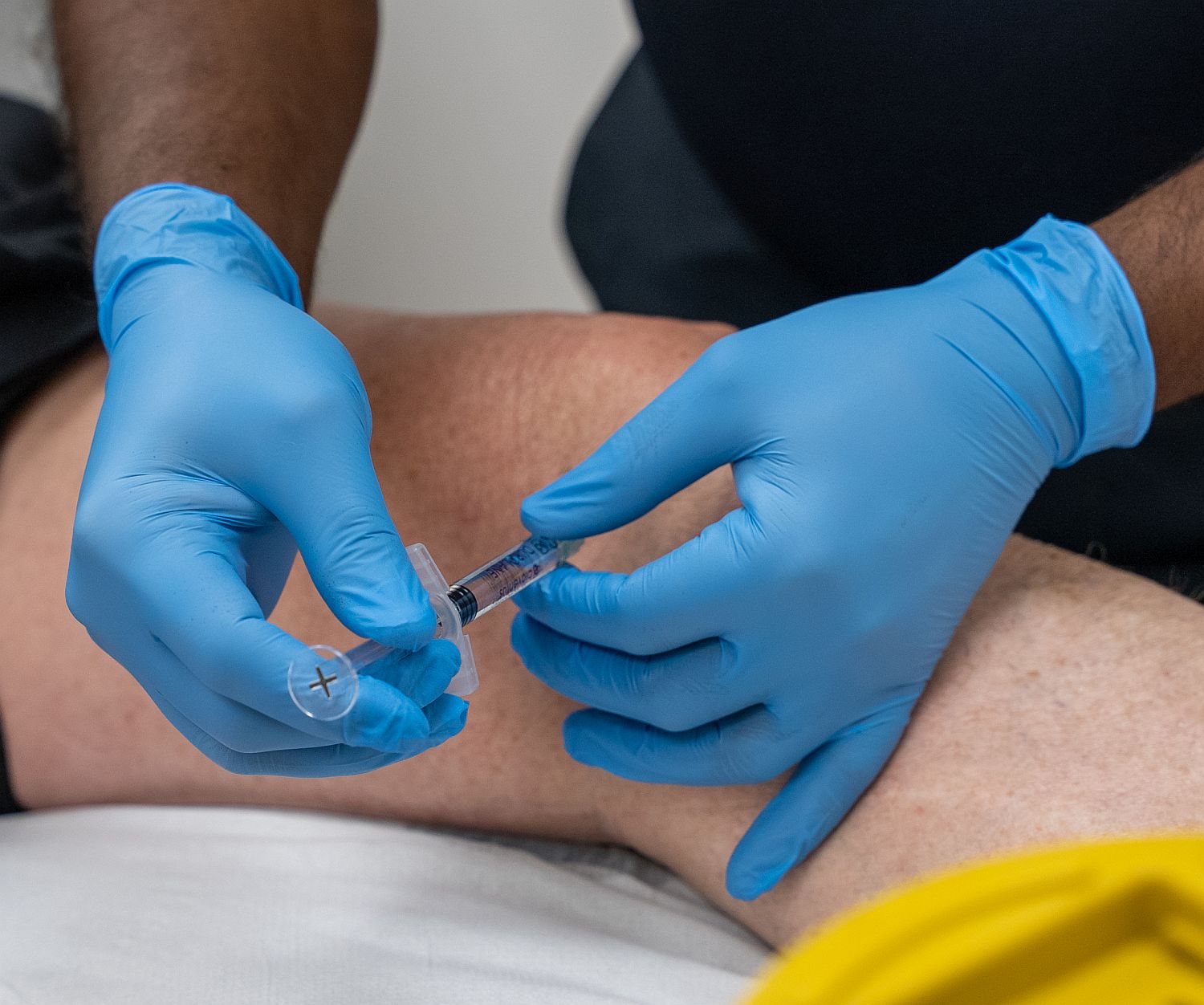
What makes DUROLANE unique?
Compared to other hyaluronic acids, DUROLANE is made with unique, patented NASHA® technology, giving it a gel-bead structure. This makes DUROLANE more resistant to degradation over time and provides long-lasting pain relief with a single injection.
How Does DUROLANE Work?
Hyaluronic acid is a molecule found naturally throughout the human body. It is an important component of joint fluid, called synovial fluid, which provides lubrication and cushioning in normal, healthy joints.
When you have osteoarthritis of the knee, the hyaluronic acid breaks down and becomes diluted, reducing its natural elastic properties, which can further degrade cartilage tissue and cause increased joint pain.
Hyaluronic acid in osteoarthritic joints has lost its natural viscoelastic properties, which are needed to protect joint tissues. This loss of viscoelasticity means that the synovial fluid no longer retains the ability to absorb shock and protect surrounding cartilage tissue.
The hyaluronic acid in DUROLANE has the same composition as the natural hyaluronic acid your body produces, but it’s in a highly concentrated formulation that’s been uniquely stabilised to help resist the degradation caused by osteoarthritis. DUROLANE is administered as a single-injection directly into the knee.

Is DUROLANE right for you?
You may be prescribed DUROLANE if you are:
- 01 Diagnosed with mild to moderate osteoarthritis
- 02 Diagnosed with osteoarthritis in the knee, hip, shoulder, ankle, wrist, fingers, or toes
- 03 A non-responder to alternative osteoarthritis treatments
- 04 Allergic to animal-sourced products and in need of a synthetic product
- 05 Motivated to get back to your normal daily activities
- 06 Looking to delay joint replacement surgery, with a treatment safe for repeated use over time
- 07 Not a surgical candidate and needing a non-operative treatment for long-lasting pain relief
Many factors may influence which osteoarthritis therapies work best for you. So talk with your clinician to find out if DUROLANE should be part of your treatment pathway
What makes DUROLANE different?
As a patient, you may be presented with different options to treat osteoarthritis without knowing how each option can help you. The following information can give you a clear understanding of DUROLANE’s design and benefits.

HIGH MOLECULAR WEIGHT
With a molecular weight higher than that of the body’s natural hyaluronic acid, DUROLANE can provide longer-lasting pain relief than lower molecular weight hyaluronic acids, NSAIDs, or corticosteroid injections.

BIO-FERMENTED
DUROLANE is a bio-fermented synthetic product, eliminating avian allergens and reducing the risk of adverse events.

LONG-LASTING PAIN RELIEF
DUROLANE is known for its ability to provide osteoarthritis patients with long-lasting pain relief.

REDUCES PAIN SENSATION
DUROLANE can act as a shield around the pain signals sent from the joint. This may help reduce or eliminate your use of NSAIDs or other pain medications— which also means reducing or eliminating the risk of developing side effects of these treatments.

PATENTED NASHA® TECHNOLOGY
DUROLANE has a cross-linked and stabilised molecular structure. Its patented chemical design, called NASHA (non-animal stabilised hyaluronic acid), makes DUROLANE highly viscous, shock absorbent, and resistant to degradation.
These qualities mean that DUROLANE provides extra cushioning and improved range of motion. Because it is resistant to degradation, DUROLANE also may provide longer-lasting pain relief than other osteoarthritis treatments.
Receiving your DUROLANE treatment
Locations
At Xcel Health Group’s Clinic
Provider
A trained and authorised Xcel Health clinicians, will be providing you the treatment
Duration
Less than 30 minutes
Pain
Local anesthetic to minimise injection discomfort, if needed
After receiving your DUROLANE treatment
Your clinician will provide you with the DUROLANE post-injection treatment guide and care instructions.
The most common side effects of treatment with DUROLANE are mild to moderate pain, swelling, or stiffness for up to one week after the injection. Applying a cold pack to the area for 10 to 15 minutes may reduce these effects. If symptoms last more than a week, contact your clinician.
You may be advised to avoid strenuous activity (such as tennis, jogging, and long walks) for two days after the injection.
DUROLANE can give you freedom from knee osteoarthritis pain, improving joint function and quality of life as early as two weeks after treatment.


Download our FREE Durolane Brochure and see how it can help your painful joints.
Know Your Pain













